Olympia, WA Pollen and Allergy Report for Summer 2023
Pollen Allergy Trends in Olympia, WA
When is pollen lowest in Olympia, WA?

February
Lowest month total PPM
Avg. PPM
When is pollen highest in Olympia, WA?

May
Highest month total PPM
Avg. PPM
How does pollen in Olympia, WA compare to Washington?
Olympia has a lower average PPM than the state of Washington.
Olympia yearly avg PPM:
Washington yearly avg PPM:
How does pollen in Olympia, WA compare to the USA?
Olympia has a lower average PPM than the USA.
Olympia yearly avg PPM:
USA yearly avg PPM:
Is pollen worse this year in Olympia, WA?
Spring 2023 was worse than spring 2022.
Spring 2023 PPM:
Spring 2022 PPM:
Average PPM in Olympia, WA
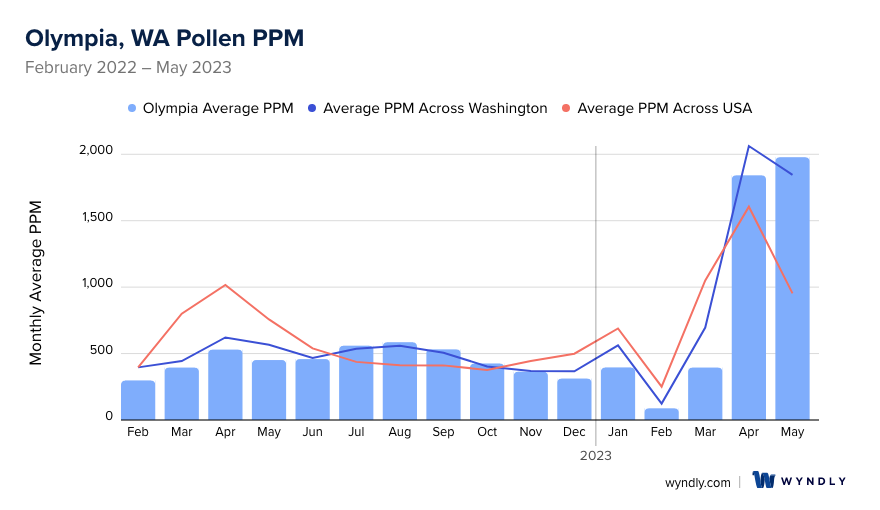
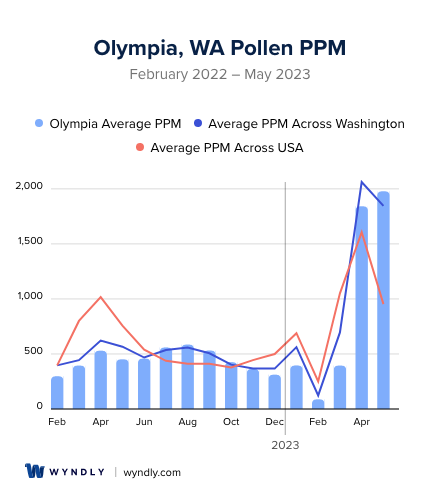
Olympia, WA Pollen and Allergy Breakdown by Month
Grass
When is grass pollen highest in Olympia, WA?
March has the highest grass pollen in Olympia, WA with an average PPM of
When is grass pollen lowest in Olympia, WA?
November has the lowest grass pollen in Olympia, WA with an average PPM of
Tree
When is tree pollen highest in Olympia, WA?
May has the highest tree pollen in Olympia, WA with an average PPM of
When is tree pollen lowest in Olympia, WA?
April has the lowest tree pollen in Olympia, WA with an average PPM of
Weed
When is weed pollen highest in Olympia, WA?
August has the highest weed pollen in Olympia, WA with an average PPM of
When is weed pollen lowest in Olympia, WA?
February has the lowest weed pollen in Olympia, WA with an average PPM of
Olympia, WA Pollen Monthly Breakdown by Pollen Type
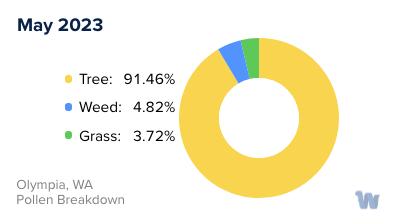
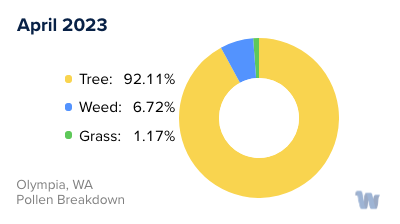
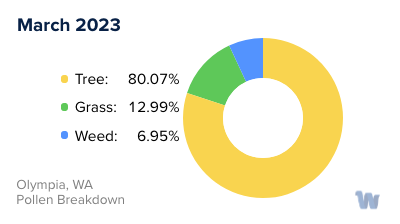
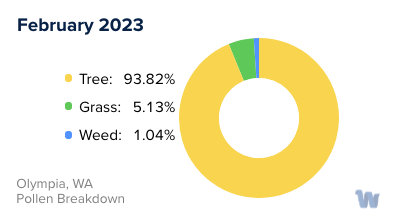
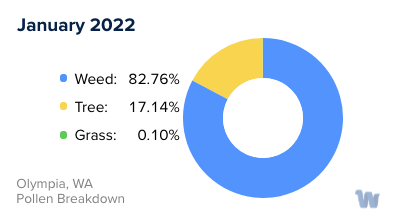
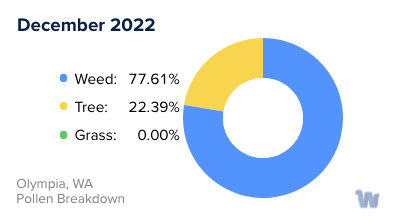
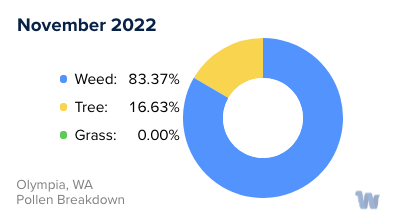
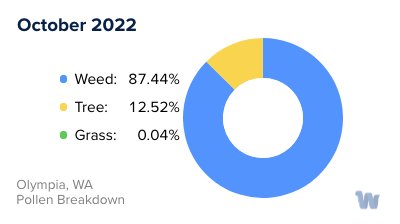
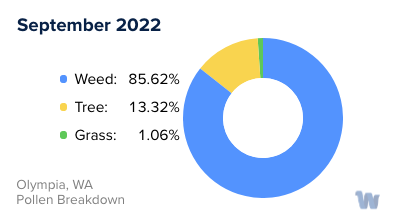
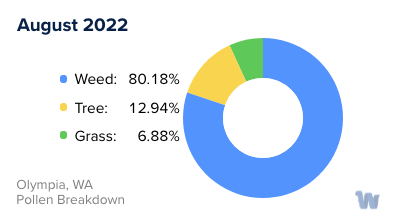
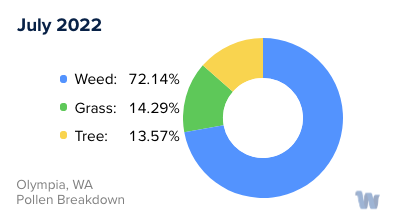
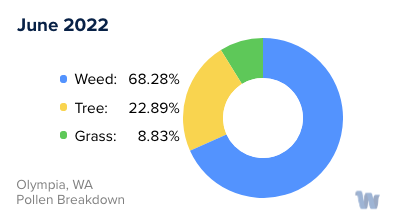
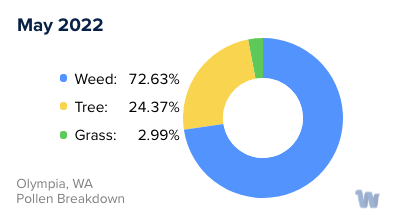
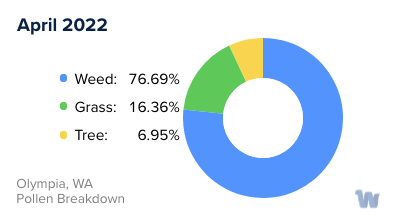
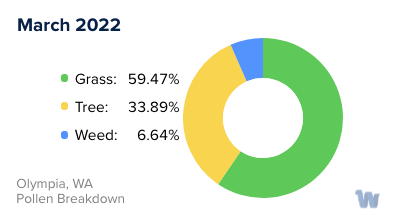
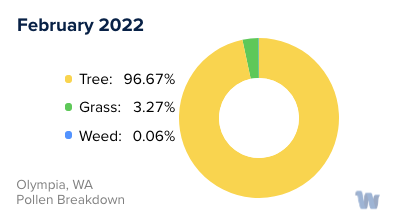
Pollen and Hay Fever in Olympia, WA
In the picturesque city of Olympia, Washington, the beauty of the changing seasons brings with it a less welcome visitor - pollen allergies. Often referred to as hay fever, this condition can transform a peaceful spring or summer day into an uncomfortable ordeal for those susceptible.
In Olympia, the primary culprits behind these allergies are tree, grass, and weed pollens. Each type of pollen has its own "season," or period of the year when it is most prevalent, and therefore, when it most commonly triggers allergic reactions.
Tree pollen, particularly from species such as the Pacific Alder, Western Red Cedar, and Douglas Fir, which are abundant in the region, tends to be the earliest harbinger of the allergy season. As winter recedes and the trees begin to bud, usually from late February to April, tree pollen counts can spike, causing a surge in allergy symptoms.
As the tree pollen season wanes, grass pollen takes the baton. From May to early July, grasses such as ryegrass and Kentucky bluegrass release their microscopic grains into the air. This period often coincides with the lush green landscapes of Olympia's late spring and early summer, making it a particularly challenging time for those with grass pollen allergies.
Lastly, as summer transitions into fall, weed pollen, especially from species like ragweed and sagebrush, begins to dominate the pollen forecast. From late August to October, these plants release their pollen, marking the final wave of the annual allergy season.
It's important to note that Olympia's unique geography and climate can influence these general timelines. The mild, damp winters and dry summers characteristic of the Pacific Northwest can cause some variability in the timing and severity of each pollen season.
While Olympia's pollen seasons can pose challenges for those with hay fever, understanding when each type of pollen is most prevalent can help residents anticipate and prepare for these periods. Though it can be a nuisance, it's a small price to pay for the natural beauty that defines this Washington city.


